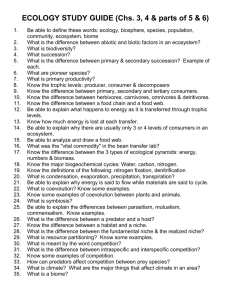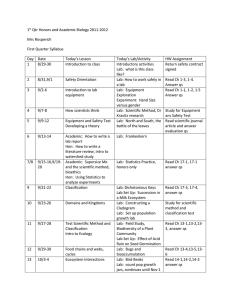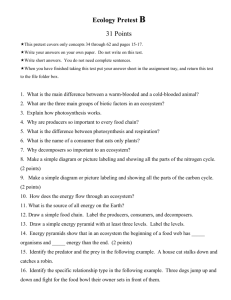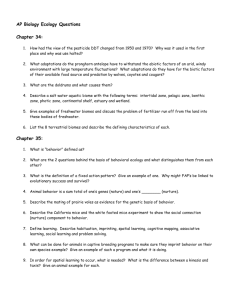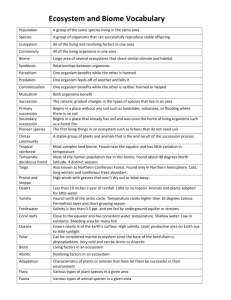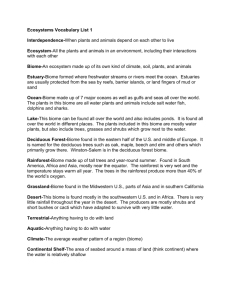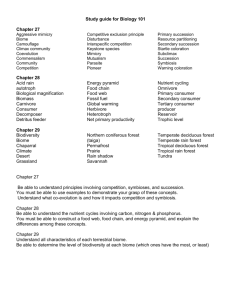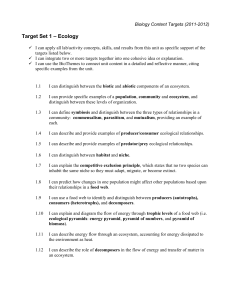Ecology Objectives
advertisement
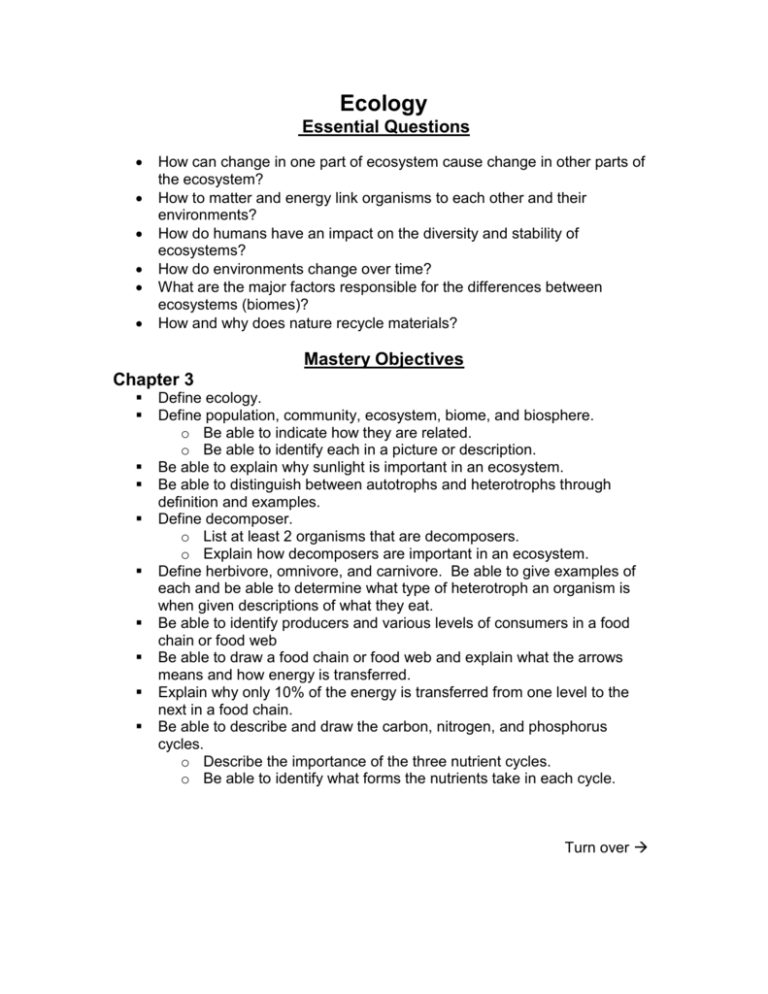
Ecology Essential Questions How can change in one part of ecosystem cause change in other parts of the ecosystem? How to matter and energy link organisms to each other and their environments? How do humans have an impact on the diversity and stability of ecosystems? How do environments change over time? What are the major factors responsible for the differences between ecosystems (biomes)? How and why does nature recycle materials? Mastery Objectives Chapter 3 Define ecology. Define population, community, ecosystem, biome, and biosphere. o Be able to indicate how they are related. o Be able to identify each in a picture or description. Be able to explain why sunlight is important in an ecosystem. Be able to distinguish between autotrophs and heterotrophs through definition and examples. Define decomposer. o List at least 2 organisms that are decomposers. o Explain how decomposers are important in an ecosystem. Define herbivore, omnivore, and carnivore. Be able to give examples of each and be able to determine what type of heterotroph an organism is when given descriptions of what they eat. Be able to identify producers and various levels of consumers in a food chain or food web Be able to draw a food chain or food web and explain what the arrows means and how energy is transferred. Explain why only 10% of the energy is transferred from one level to the next in a food chain. Be able to describe and draw the carbon, nitrogen, and phosphorus cycles. o Describe the importance of the three nutrient cycles. o Be able to identify what forms the nutrients take in each cycle. Turn over Chapter 4 Be able to explain the difference between an organism’s habitat and niche. Distinguish between the 3 types of symbiosis. o Identify what type of symbiosis is occurring when given examples. o List at least 2 examples of each type symbiotic relationship. Define ecological succession. o Explain the difference between primary succession and secondary succession. o Define pioneer species and list examples. o Define climate community. o Be able to describe the succession from pioneer species to climax community in a land biome (such as temperate forest). Define biome. o List the characteristic plant and animal life in the following six land biomes: Tropical Rainforest, Grasslands, Desert, Temperate Forest, Taiga, Tundra o Be able to identify the type of climate in each biome. Distinguish between abiotic and biotic factors and give examples of each. Chapter 5 Define logistical growth. Define exponential growth. o Describe conditions under which logistical or exponential growth occur. Describe factors that play a role in population growth rate. Define carrying capacity and be able to give an example. Describe the long-term effects of competition on populations of two different species competing for the same resources. Describe the predator-prey relationship and explain how it can help control the population. Distinguish between density-dependent factors and density-independent factors. o Explain how density-independent limiting factors can affect a population. Explain how a limited resource can affect the survival of a species.
